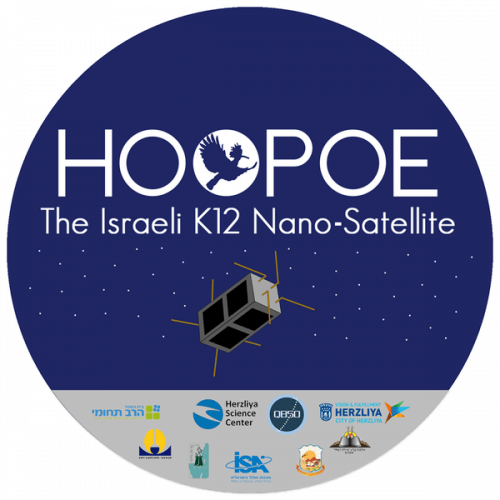The satellite is one of 50 satellites from around Europe in the European QB50 project designed to send 50 satellites to examine the thermosphere - a high layer that also extends above the atmosphere. All the other satellites were built by university students

This news is based on the announcement of the Israeli Space Agency and the Ministry of Science. You are also invited to read the original articles of the science website:
- The coordinator of the field of satellites and space at the Herzliya Science Center tells about the work of the students in building the satellite (The interview will be published at the same time as this news)
- First exposure of the student satellite Dokifat 2, by Roy Orbach, one of the students who participated in the project (June 2015)
- Exclusive: Project Israel 70 - launch of a fleet of 70 nano-satellites in preparation for the country's 70th year
- The Israeli student satellite Dokifat 1 was successfully launched from Russia (June 2014)
Another Israeli student satellite will soon be launched into space
The Israeli students aim high: the tiny student satellite "Dukifat 2", a project of The Israel Space Agency at the Ministry of Science and the Municipality of Herzliya, will be launched on the morning of March 20 Israel time to the International Space Station with a swarm of 28 tiny satellites from around the world. The purpose of the satellite swarm will be to map the thermosphere, a mapping that will help, among other things, in the transmission of GPS signals. Dokifat 2 is the only student satellite to be launched while the other satellites were built by students and researchers from around the world. It will be launched to the International Space Station from Cape Canaveral in the USA on the Atlas-5 launcher, from there it will be transferred to the Japanese part of the space station and after about a month and a half it will be sent into space using a special robotic arm operated by the astronauts.
According to the Minister of Science Ofir Akunis, "Dokifat 2 is not only an educational project that brings space closer to teenagers and paves the way for tomorrow's generation, but also an international research project. The launch of the satellite is another step taken by the Ministry to promote space education, research and public awareness of the issue."
Dokifat 2 is the second tiny satellite developed by Israeli students - it measures 10x10x22.7 cm and weighs 1.8 kg. Dokifat 1, developed by Israeli students from the Herzliya Science Center, was launched in June 2014 and is still active in space, far beyond the original estimate.
The satellite will be launched as part of the European Union's QB50 project together with satellites built by students from Belgium, Turkey, South Africa, Australia, Germany, France, South Korea and more. Of the 50 groups from around the world that started working on satellites, only 28 passed NASA's rigorous tests, including the Israeli group.
More than 80 students - from Ofefkim, Mirocham, Maofra, Mehura (the Bedouin diaspora) and Herzliya - have been working for the past two years on the development of Dokifat 2. The students worked in ten teams and had access to a clean room, an electronics laboratory and a ground station for communication with satellites. Each team was responsible for a different area such as examining the technical specifications, programming the operating system, deciphering the satellite data, control, system engineering and more.
The students were accompanied by engineers from the academy and from the Bat Halal factory in the aerospace industry. The satellite successfully passed the tests performed in the clean room at the Aerospace Industry's space plant: image of the space environment, environmental tests such as vibration, and tests in a vacuum chamber that exposed the satellite to the vacuum and extreme temperatures in space.
According to Dr Meir Ariel, director of the Herzliya Science Center, "In addition to the five-unit matriculation in engineering sciences, the youth in the project were privileged to be part of the practical planning of an engineering project, which is carried out under conditions similar to those in the space industries in Israel and around the world."
The tiny size of the satellites does not exceed a carton of milk, so their cost is also relatively low. As part of the project, the swarm of satellites will explore the lower thermosphere layer from an altitude of 415 km and below in a one-year orbit around the Earth. Dokifat 2 is equipped with a sophisticated control system that directs the satellite in space to allow the scientific equipment mounted on it to make precise measurements. This system is also able to reduce the friction of the satellite with the particles of the atmosphere, thereby extending its life time in orbit.
The thermosphere is of great importance in the transmission of GPS signals and long-range radio waves on Earth. The data will be transferred to the ground station at the Herzliya Science Center, where the students will decipher it, and to the project management and to ground stations of other groups around the world. A year later, the satellites are expected to fly down, heat up and disintegrate in the atmosphere at an altitude of 90 km above the earth's surface.
Mayor of Herzliya Moshe Padlon He said "The projects of Dokifat 1 and Dokifat 2 and the upcoming launch are a tremendous achievement by any measure and testify both to the success of our high municipal investment in education in general and scientific education in particular, and to the high level of the youth in Herzliya. I have no doubt that by doing so we are contributing to the advancement of the technological and scientific future of the country."
Videos:
An astronaut from the International Space Station refers to the Israeli student satellite that is about to arrive:
Video about Duchifat 1:
How do you launch nano satellites from the International Space Station:
